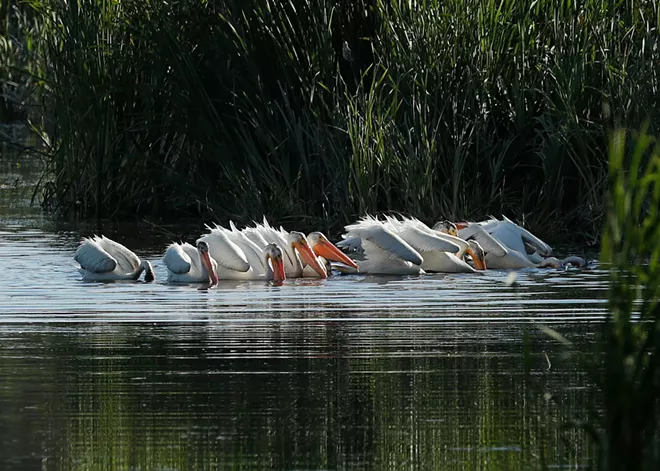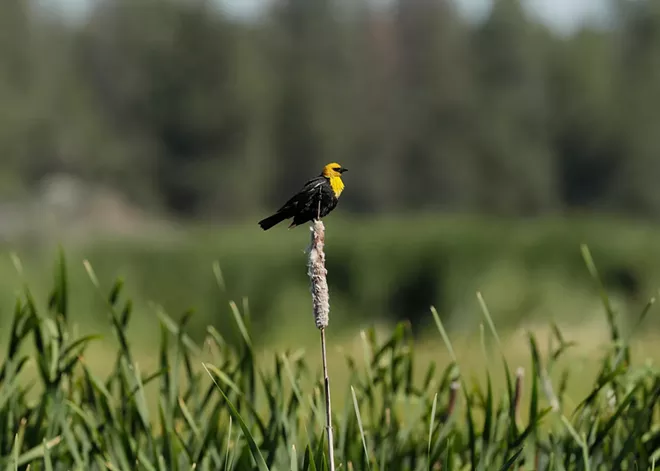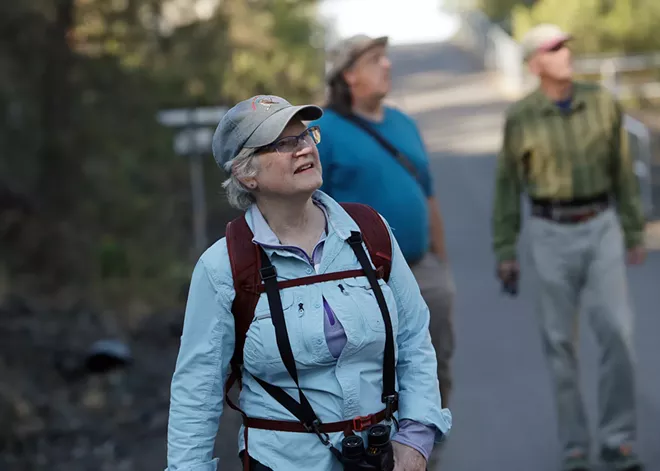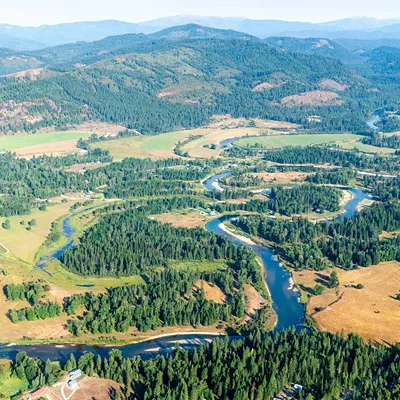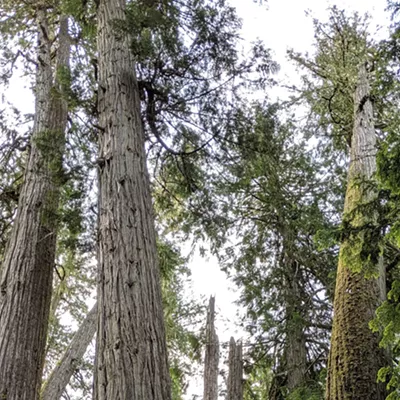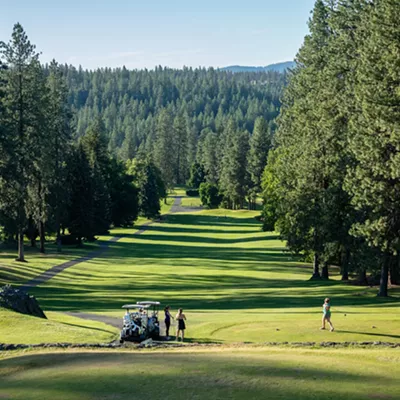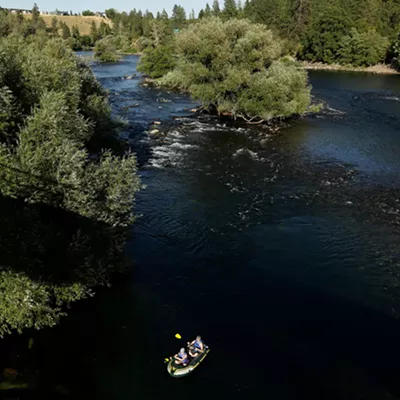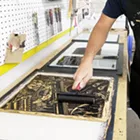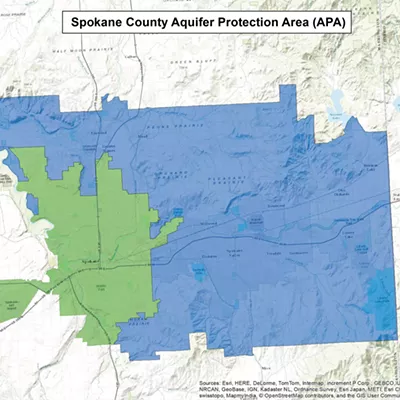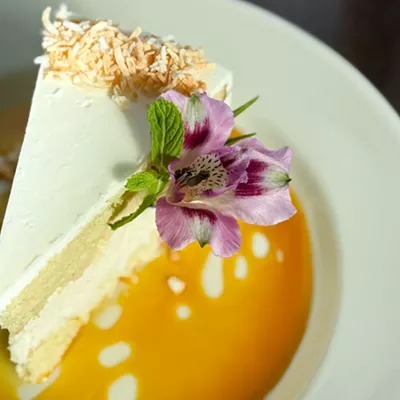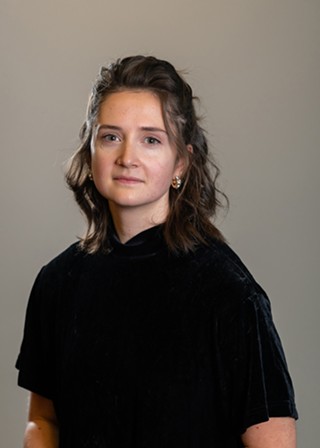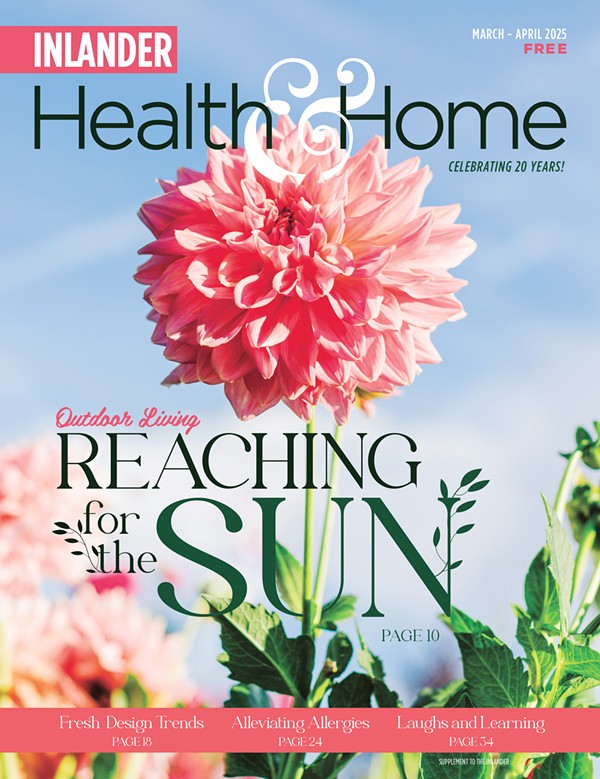"I want you to listen to this bird."
The guide stops, and the small group of us stops, too. A rapid string of chatters and chirps pours out of a nearby shrub. It sounds fussy, annoyed. It's definitely loud.
"Any idea what it is?"
Lisa Langelier, our guide for the morning's tour through the Cheney Tertiary Wetlands, waits for an answer. The handful of us are on a free birding field trip with the Spokane Audubon Society. It's 7 am and we'd just set off, but we've already stumbled upon our first quiz.
The insistent chatterbox, Langelier tells us when no one ventures a guess, is none other than the common house wren. Someone points out the tiny brown bird on a branch — it's just a few inches long, with a cute pointy butt that's characteristic of most wrens. It weighs as little as two quarters but is one of the Northwest's noisiest birds, sometimes singing up to 11 times per minute.
A house wren's chatter is so consistent that it makes listening for other bird songs pretty difficult, Langelier says. Despite the binoculars hanging round her neck, Langelier does most of her birding by ear. She moves the group past the house wren, and we walk on until we hear the deedle deedle deedle of a rock wren instead.
"Let's see if we can find that little singer," Langelier says, finally bringing the binoculars to her eyes.
Chances are good that wherever you are, birds are there, too — in your backyard, on your walk to work, on your weekend hike or on your patio during lunch break. But to most people, they might as well be invisible.
"Most people seem to be pretty oblivious to bird life," says Alan McCoy, president of Spokane Audubon Society. "It's not just birds. Most people also don't know the names of the plants and the flowers and the things growing around us. People are so hooked into humanity that they don't spend enough time outside."
If you want to start birding but are worried about memorizing endless identification facts, don't be. Birding is less about rote memorization and more about practiced awareness, McCoy says. For most enthusiasts, it's an excuse to get outside, listen and look. It's one way to connect to the world around you, adding another dimension to hiking, exercising or just strolling through the neighborhood.
Most birders do have a pair of binoculars, and McCoy suggests getting some if you're serious about getting started. On the field trip, I wouldn't have been able to see how silky smooth a cedar waxwing was if it weren't for a pair that Langelier let me borrow.
The next thing to do, and please excuse the irony, is download an app on your phone, McCoy says. The Merlin Bird ID by Cornell Lab helps identify birds by sight, sound, or description, and is an invaluable tool to novice and experienced birders alike. By holding up the microphone to the world around you, the app will listen and let you know what birds are nearby with impressive accuracy.
But the best thing you can do is go birding with someone who's already in love with the hobby. Not all birders like being around people — in fact, many of them prefer being in nature to spending time with other humans, McCoy says — but if you find someone who's willing to share their knowledge and enthusiasm, you're likely to catch the bug, too.
"If you go with somebody who's leading a field trip, that person is generally inclined to sharing the love of birds with people," he says. "You'll learn a couple things. You'll learn some birds, you'll learn some bird calls. Of course, you'll forget some of those things almost immediately. But, you'll get some excitement from the person who's leading the trip and you'll learn where to go."
Many of Spokane Audubon Society's field trips are free and open to the public, and you can check out upcoming tours at audubonspokane.org. They usually have extra binoculars to borrow. While the organization focuses on habitat conservation for birds, it recognizes how the society's work also overlaps with similar efforts for other pollinators and plants. If there aren't many birds out, leaders might look to a participant who's willing to share knowledge about plant or mushroom identification.
But you're pretty likely to see some birds. In a few hours on a Friday morning, our small field trip group identified 42 species of birds, including pelicans, catbirds, flycatchers, kingbirds, an oriole, two great blue herons and 10 types of ducks. McCoy has been on birding trips that have logged over double that number.
Plus, you'll be outside in someplace wild, hopefully in the sunshine, getting some steps in during the cooler morning or evening hours when birds and other wildlife are usually most active. To my delight, I saw a marmot sunning itself while the rest of the group was looking at the rock wren. When I pointed it out, I got a classic birder reply: "Oh, so we've devolved into mammal watching now?"
Unless you count sarcasm, there's only one downside to birding: Once you start, you might not be able to stop.
"They're colorful, they make cool sounds, and they fly. What's not to like?" McCoy says. "The main tool that you need is paying attention. When you do start paying attention, you can't shut it off." ♦

